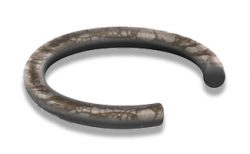Sanitary Sealing Solutions for Sterilization Processes (UV, CIP and SIP)
Withstanding severe cleaning regimes…
The Food and Beverage industries are progressively pressured by clients requesting a cutback in chemical additions and preservatives, which results in a larger chance of bacteria build up on sanitary equipment.
Standard sterilization systems used by food and beverage manufacturers contain steam-in-place (SIP) and clean-in-place (CIP). Yet, a progressively adjusted and safety-conscious market has seen ever more rigorous quality standards, resulting in manufacturers moving on to the new working systems. In the background is an innovative technology that is leading-the-way in effective equipment sterilization to a manufacturing extent.
Ultraviolet Germicidal Irradiation (UVGI)
is a system now established in food and beverage industries, yet lately obtaining more popularity, as it presents a cost-effective option to short-term process lines. Highly efficient at permanently removing the DNA of microorganisms, UVGI is low maintenance and environmentally friendly. With no toxins or remains emitted into the producing process, it does not influence the chemical mixture, odor, taste or pH of the product.
UV-C lamps provide accurate medium-pressure ultraviolet short-wavelengths, for instance, tri-clamp connectors. To ensure seal durability it is crucial to fully understand the application parameters of UV-sterilisation in elastomer gaskets (tri-clamp).
Another prevailing element moving into UV-C technology is UV degradation of rubber ingredients. The UV collaborates with the carbon chains in the molecular bonds of the elastomer. This makes free radicals which then work with oxygen to create carbonyl groups which mean a stress-induced chemical attack.
Discolouration will be the first indication on exposed surfaces of elastomer gaskets. Exaggerated exposure to predisposed materials can lead to further cracking and also in radical cases, disintegration. To overcome this, chemical UV equalizers can be brought into the formulation and carbon black is usually identified as one of the most efficient UV shield systems for use with elastomers.
There are plenty of standard and custom-made elastomer gaskets for UV-sterilisation applications, ranging from Fluoroelastomers (FKM), Perfluoroelastomers (FFKM), Ethylene-Propylene (EPDM), Nitrile (NBR), Hydrogenated Nitrile (HNBR) and Silicone (VMQ) material grades. We recommend manufacturers to get in contact with our team of experts with specific application demands, in order to supply substantial technical guidance in choosing the adequate elastomer gasket as every sealing application is unique.
If UV is not the selected system, SIP and CIP systems will still demand a high-efficiency elastomer material, as these cleaning procedures can reduce seal lifespan if the elastomer is not compatible.
SIP (Steam-In-Place)
is a regime that uses thermal energy of condensing steam to sterilize, removing 99.9% bacterial build up. Standard SIP course temperature parameters are between 120°C and 135°C, at adequate saturated steam stress, with exposure time contingent to system scheme and complexity.
Deterioration can be dramatically intensified when elastomeric seals positioned in a SIP application are open to a scheme of pressure, high temperature and load. With each Kelvin rise in temperature, the speed of chemical reaction doubles so before choosing an elastomer gasket for SIP applications, manufacturers should reflect the grade of steam they demand.
CIP (Clean-In-Place)
is a different typical sterilization system. It uses a mix of heat, water, and chemicals to sanitize equipment. Some of the chemicals used to eliminate in-process remainders, control bacteria build up and lowers endotoxin levels are Phosphoric and nitric acids, Caustic Soda, Peracetic Acid (PAA) and Sodium Hypochlorite.
As the food and beverage industries observe more rigorous processes being initiated, obtaining the seal specification adequate for process machinery could save manufacturers from the high risk of expensive and damaging retractions and product liability.
Perfluoroelastomers (FFKM) have been created to overcome high temperature and withstand chemicals used in SIP and CIP regimes.
Manufactured designs include FDA, ADI-free, USP Class VI, Metal Detectable, 3-A Sanitary Standards, WRAS, Hyclamp® and EC1935/2004 & EC2023/2006 compliant materials.
Oxygen Clean / Component Cleaning
Is a process that is performed in a controlled clean area, where there is no risk of dust, oil, hair, lubricants and other manufacturer contaminants. Oxygen Cleaning essentially removes everything that would cause a risk to the product.
E & OE. M Barnwell Services endeavours to make sure all the content is correct. Information has been gained from manufacturing partners.
